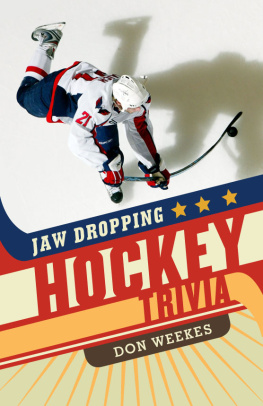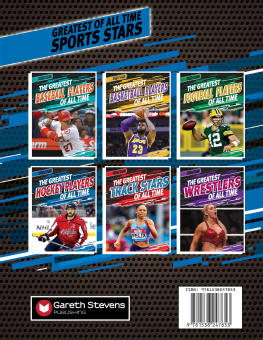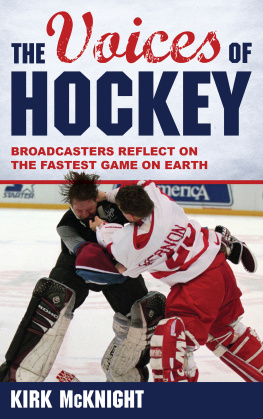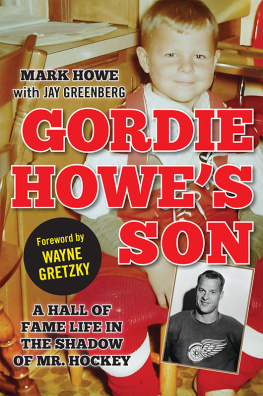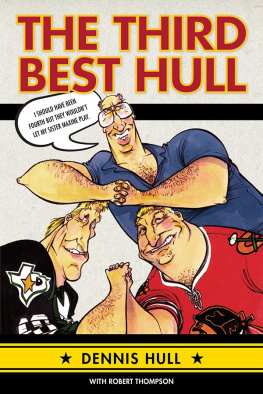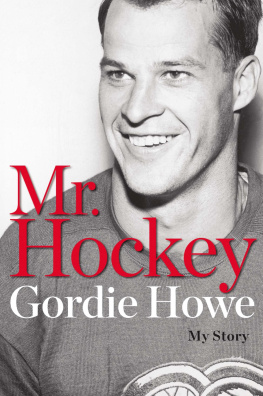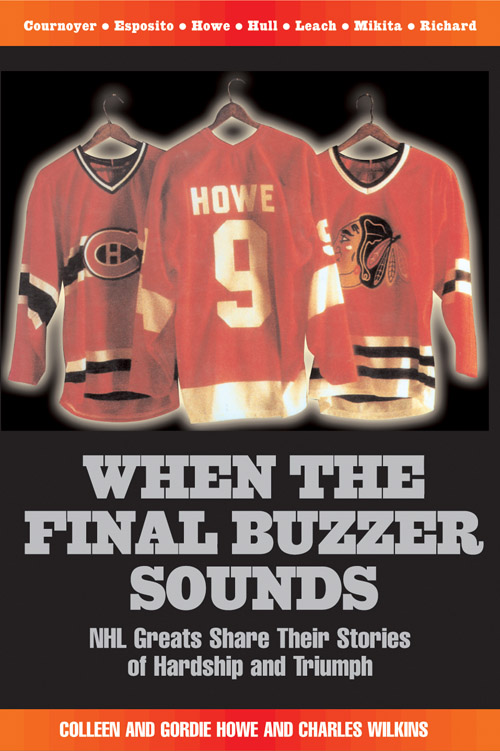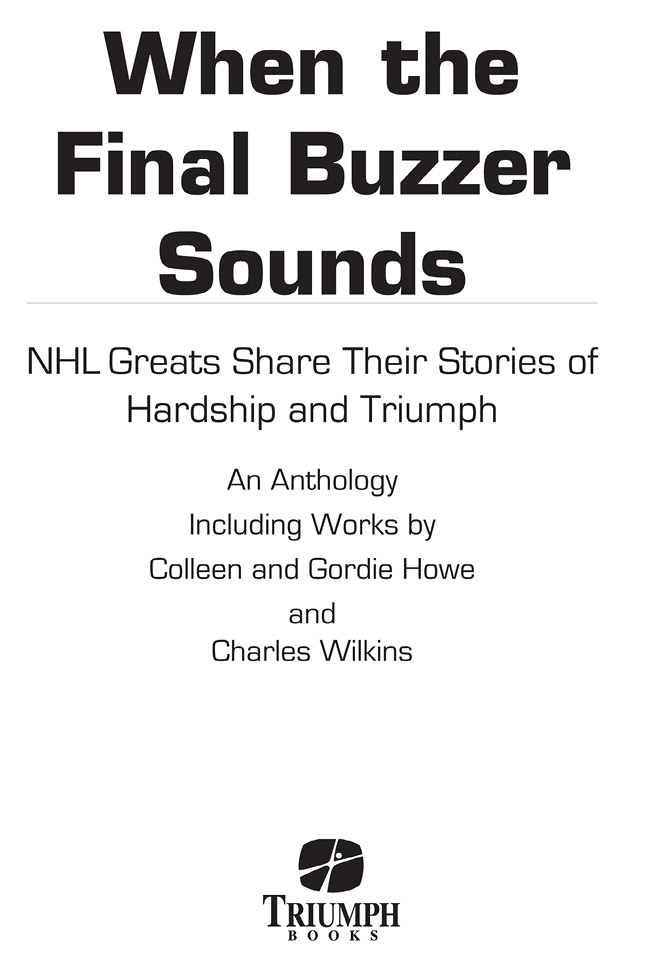
For Ralph Currie who first took me to Maple Leaf Gardens and for the Grandview Penguins of 1997, my all-time favorite hockey team. C. W.
Contents
Introduction by Charles Wilkins
When the Final Buzzer Sounds
One of the great NHL defensemen of the 1950s and 60s, Hall of Famer Bill Gadsby, once said to me, Everything would be fine if the good Lord had given guys like me the capability to play hockey until we were sixty-five. Then we wouldnt have to start life over at forty.
Unfortunately, the Creator was neither a good career strategist nor a perfect general manager, meaning that, for many professional hockey playersthe stars as well as the margin-dwellerslife tends to hit a Great Divide somewhere between the ages of thirty and forty.
Some players bridge the divide more easily than others. Contemporary players have often made enough money to compensate for almost any career upheaval that might append their retirements. Others have educated themselves or have an inclination for business or hockey management that makes retirement a relatively natural progression.
But all too many over the years have been unable to make the crucial psychological adjustments that are necessary when they are deprived, often against their wishes, of the camaraderie, adrenaline highs, and intense sense of purpose that has focused their lives as players.
In the pages that follow, stars such as Bobby Hull, Stan Mikita, Yvan Cournoyer, and Phil Esposito describe the strong sense of frustration that gripped them as they cast about for new fulfillment during the years that followed their playing days. Even Gordie Howe and Rocket Richard, whose inspired and inspiring careers might have been taken for the stuff of dreams, suffered disappointment and humiliation upon retirement, even at the hands of the franchises to which they had all but given their lives.
Some players, such as Eric Nesterenko, turned to alcohol and drugs upon retirement. (Reggie Leach jokes that, whereas most players play sober and drink when they retire, he drank heavily as a player and sobered up later.)
Some ex-pros turn away from the game entirelysometimes to other sports, with mixed results. Yvan Cournoyer turned with limited success to the contemporary sport of roller hockey, as did players such as Ralph Backstrom and Tiger Williams. For Stan Mikita, the transition into the world of pro golf turned out to be the retirement transition from hell.
Society has such exaggerated expectations of these players that the guys figure they have to put on a successful front no matter what, says Donna Esposito, who was married to Phil Esposito through much of his career. But a lot of these guys are just lost. And of course most of them are too proud to ask for help. Theyll walk into a restaurant, and the manager will say, Oh, come on in, great to see you! Theyre treated like celebrities, and theyre ashamed to admit theyre hurting. Their dignity is on the line.
Certainly, the franchises themselves could have done more for the players of the fifties, sixties, and seventies. To this day, many pros of the era have nothing but contempt for those who ran the game. Eric Nesterenko characterizes owners past and present as really nasty, vicious, greedy, self-serving people. Reg Leach says, The players are nothing but cattle to the owners. You can give everything to an organization for years, and theyll still dump on you and toss you out the door without giving it a thought.
The sad truth, according to Colleen Howe, is that the league is far more concerned that its corporate sponsors be taken care of than it is about the players who have made the game what it is.
When the Final Buzzer Sounds contains the life stories of nine of the finest and most fascinating hockey players of hockeys golden years, the years of the six-team league and early expansion, which many students of hockey consider the historic high ground of the professional game.
In writing the profiles, I have attempted to station myself somewhere between the lionizing mythology that surrounds and even traps our professional athletes and the seldom-witnessed realities of their lives. My subjects were remarkably forthcoming. In some cases, they took me into their confidence with an almost painful honesty. The book, as a result, is as much about vulnerability and survival as about the game of hockey. More simply, it is about well-known hockey players, now retired, speaking with honesty and clarity about who they are, where theyve been, and what theyve seen and felt. In most cases, the profiles also encompass the players wives, who for the most part are unknown to fans but who perhaps possess a clearer perspective than anyone else on life behind the scenes and beyond the glory years.
Because the profiles were written not as a single group, but over a period of time, they are collected here with brief epilogues that convey a sense of what each player has been up to since the piece was completed.
It hardly needs saying that book-length manuscripts do not come together without the advice and assistance of many people. This one is no exception. For their help along the way, I would like to thank, among others, my friend Dan Diamond for his assistance and advice; my agent Jennifer Barclay for her goodwill and encouragement; my publisher, Mitch Rogatz, for his hard work and suggestions; my editor, Ken Samelson; as well as James Duplacey and Phil Pritchard, two of hockeys most knowledgeable students, for their generous suggestions and advice.
I would also like to thank my family for their loving patience and tolerance, and Gordie and Colleen Howe for their organizational help, which was instrumental in getting parts of the book written, and for their generosity and friendship over the years.
As always, the process of book-building has been both exciting and instructive, and I trust the chapters that follow will be as engaging to read as they have been to research and write.
Charles Wilkins
Autumn, 2000
1. Yvan Cournoyer: A Simple Man at Heart
When eight-year-old Kurtis Cournoyer asks his dad for a bedtime story, he knows pretty much what to expect. Yvan sits down beside him, says Evelyn Cournoyer, and, without exception, the first words out of Yvans mouth are, Once upon a time, there was a little boy who had a dream.... And Kurtis and I say to ourselves, Oh, no, not the Dream again!
The little boy, according to the tale, lived in a small town in rural Quebec and wanted nothing more in life than to play hockey for the Montreal Canadiens.
Because he was smaller than most boys his age, he was prepared to work extremely hard to make his dream come true. And every day, all winter, he spent every possible moment either on the town rink or on the tiny sheet of ice in his backyard. In summer, he fired hundreds of shots a day against the wall of his parents garage.
Eventually, he moved with his family to Montreal, where, as a teenager, he continued to pour every ounce of his energy into improving his hockey skills.
And, sure enough, one day when he was nineteen years old, his hard work bore fruit, and he was summoned by the great coach Toe Blake to suit up with Les Glorieux, the Canadiens, the mythic standard bearers of the pride of French Canada.
He could not have been prouder as he pulled on the Canadiens sweater for his first game. And he could not have been more excited as he lined up for his first shift beside two of the heroes of his boyhood, Henri Richard and Jean Beliveau.


